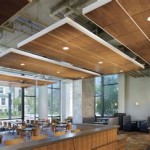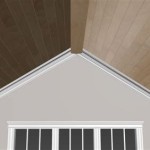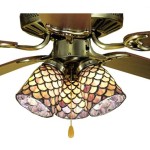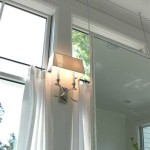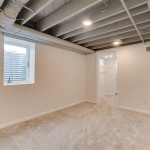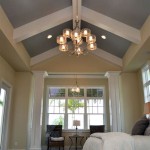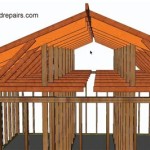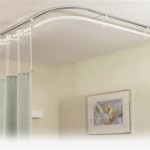Suspended Ceiling vs Drywall: Choosing the Right Option for Your Space
When it comes to interior finishing, the choice between a suspended ceiling and drywall is often a crucial one. Each option presents distinct advantages and disadvantages, making it essential to carefully assess the project's specific requirements and desired outcomes. By understanding the characteristics and applications of both systems, you can make an informed decision that aligns with your needs and budget.
Suspended Ceiling: A Versatile and Functional Option
Suspended ceilings, also known as drop ceilings, are constructed by suspending a grid system from the existing ceiling structure. This grid supports panels that create a new, lower ceiling. Suspended ceilings are commonly found in commercial, industrial, and institutional spaces, offering numerous benefits:
Accessibility: One of the primary advantages of suspended ceilings is their easy access to utilities and mechanical systems. The panels can be easily removed, allowing for convenient maintenance and inspection of wiring, plumbing, HVAC components, and other infrastructure. This feature simplifies troubleshooting and repairs, minimizing disruption to the space.
Flexibility: Suspended ceilings offer a high degree of flexibility in terms of design and functionality. Different types of panels are available, including acoustic, fire-resistant, and moisture-resistant options. The grid system can be customized to accommodate various shapes and sizes, making it suitable for creating unique architectural features such as coffers and dropped soffits.
Aesthetics: Suspended ceilings provide a clean and modern aesthetic. The panels come in a wide range of colors and finishes, allowing for the creation of diverse visual styles. Additionally, the space between the existing ceiling and the suspended grid provides an opportunity to incorporate lighting fixtures and other decorative elements, enhancing the overall design.
However, suspended ceilings do have limitations. They are typically more expensive than drywall ceilings and can be more prone to noise transmission due to the open space between the layers. Additionally, the lower height of a suspended ceiling can reduce the overall perceived space and restrict the placement of certain fixtures.
Drywall: A Traditional and Reliable Solution
Drywall, also known as plasterboard, is a familiar and widely used material for interior wall and ceiling finishes. It is a flat sheet made of gypsum plaster sandwiched between two sheets of paper. Drywall is installed directly to the existing structure, creating a seamless and integrated ceiling.
Cost-Effectiveness: Drywall is generally a more cost-effective option compared to suspended ceilings. The materials and labor costs are typically lower, making it a budget-friendly choice for many projects.
Aesthetic Options: Drywall provides a smooth, continuous surface that can be easily painted or textured to achieve a variety of aesthetic styles. The seamless surface offers a clean and modern look, while the use of different textures can add visual interest and depth to a space.
Durability and Strength: Drywall is a durable and strong material that can withstand normal wear and tear. It is also relatively fire-resistant and sound-dampening, making it a suitable option for residential and commercial applications.
However, drywall ceilings lack the accessibility and flexibility of suspended ceilings. Access to utilities and mechanical systems is limited to the spaces behind the drywall, requiring more invasive methods for maintenance and repairs. Additionally, drywall ceilings can be more challenging to remodel or modify in the future.
Important Factors to Consider
When making a choice between suspended ceilings and drywall, several factors need to be considered:
Budget: Suspended ceilings typically have higher installation costs than drywall ceilings. However, the long-term cost savings associated with accessibility and maintainability might offset the initial investment.
Accessibility: If easy access to utilities and mechanical systems is a priority, a suspended ceiling is the better choice. However, if accessibility is not a major concern, drywall can provide a cost-effective and aesthetically pleasing solution.
Space Requirements: Suspended ceilings take up more vertical space than drywall ceilings, so a suspended ceiling could reduce the overall height of a room. Consider the impact on headroom and the placement of fixtures before making a decision.
Aesthetics: Both suspended and drywall ceilings can achieve a variety of aesthetic styles. Consider the desired visual effect and the architectural features of the space when making your choice.
Ultimately, the best choice between a suspended ceiling and drywall depends on the specific needs, budget, and design goals of your project. Carefully analyze your requirements and consult with professionals to determine the most suitable solution for your space.

Drop Ceilings Birmingham Al Drywall Or Basement Ceiling Which Is Best

Drop Ceiling Or Drywall Which One Should You Choose

Drop Ceiling Vs Drywall Which Is Better Kanopi By Armstrong

Basement Ceilings Drywall Or A Drop Ceiling Fine Homebuilding

Is It Er To Add Drywall Or A Drop Ceiling Your Basement What We Know

Suspended Drop Ceilings Vs Drywall Basement Designer

Drop Ceiling Vs Drywall Pros Cons And Costs Angi

A Drop Ceiling That Looks Better Than Drywall How To Install In Basement Diy

Basement Ceilings Drywall Or A Drop Ceiling Fine Homebuilding

A Drop Ceiling That Looks Better Than Drywall How To Install In Basement Diy
Related Posts

